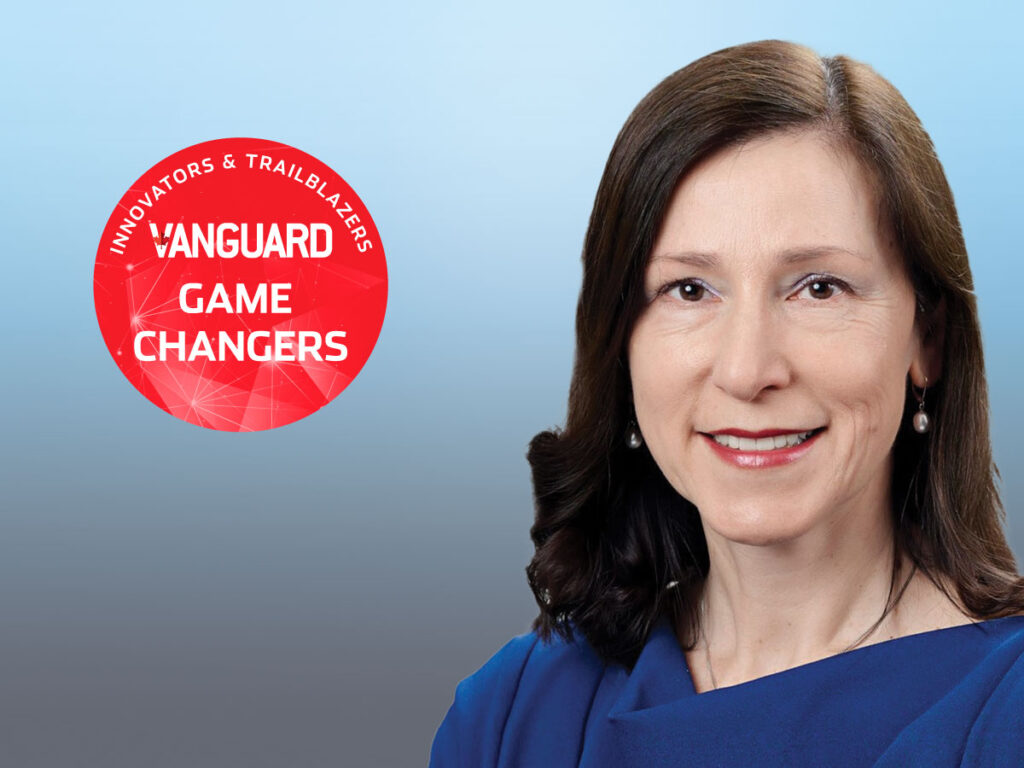France Hébert began her career in the defence industry over 35 years ago by joining the Canadian Armed Forces (CAF). She graduated from the Royal Military College (RMC) of Canada in Kingston, Ontario, with a degree in Engineering Physics. Her education at RMC emphasized academics, leadership, athletics, and bilingualism, shaping her into a well-rounded leader with strong teamwork skills.
As the Vice-President and General Manager of Defence & Security (D&S) Canada for CAE, Hébert oversees the division’s vision, growth, and strategy, managing 16 sites and over 800 employees across the country. She is also the President of SkyAlyne, a joint venture between CAE and KF Aerospace, and the President of CAE Military Aviation Training (CMAT). Hébert serves as CAE’s representative for Defence & Security Canada with the federal government and the Canadian public.
How did you start out in this industry and how has it brought you to where you are today?
I started in this industry when I joined the Canadian Armed Forces (CAF) more than 35 years ago and attended the Royal Military College (RMC) of Canada in Kingston, Ontario. I graduated with a degree in Engineering Physics, but the impact this experience had on me as a person was just as important as my program of study. RMC provides a very well-rounded education and training, which includes four pillars: academics, leadership, athletics, and bilingualism. But most of all, I learned about leadership by example, the importance of working as a team, and how to leverage the strength of all the members of the team. This is the way to success!
What is your role at your organization today?
I am the Vice-President and General Manager, Defence & Security (D&S) Canada for CAE. I lead the entire D&S business in Canada, shaping the vision, growth, operational and commercial strategy for the division, which includes 16 sites across the country and a team of more than 800 employees, many of whom are embedded within military units. I am also the President of SkyAlyne, a joint venture between CAE and KF Aerospace, and the President of CAE Military Aviation Training (CMAT). I am CAE’s representative for D&S Canada with the federal government and Canadians.
What was your most challenging moment?
Earlier in my industry career, I worked on a big proposal as well as the early set-up of a very large, complex program after the company I worked for won the bid. This program contained many firsts, including being the first program of its type with a comprehensive long-term In-Service Support framework. The program requirements had been worked on by the Government of Canada for decades. This resulted in very detailed but also, at times, contradictory demands: for example, the need to bring in new technologies, but also remain largely a commercial off-the shelf (COTS) offering. Other external factors, such as political and budgetary issues added to the complexity of the program. This created a difficult set of interlocking challenges that demanded I dig deep and use the experience I had, as well as all my resilience and problem-solving skills, to build and propose solutions to the numerous technical and program problems. Believing that I could find a way through the obstacles and rebound after each curve ball was hugely important for success. We learn a lot through adversity, and I still apply those lessons learned to this day.
What was your A-HA moment or epiphany that you think will resonate most with our reader, tell us that story.
Succession planning, when put into action, really works. In practice, this means taking the time to build skills and resilience in the people around you, and not only in those that report to you, but also in your peers and sometimes superiors. For me, succession planning is much more than just identifying an individual who can move into your role when needed – it must result in success for the whole organization. And it cannot just be a paper exercise – it needs to be followed by action.
What people or organizations do you believe best embody the innovation mindset?
Curious, open-minded people who embrace change, and even view it as an opportunity. I’ve had the good fortune to encounter such people throughout my career, both in the military and in industry. They may focus on different things: some on technology, others on operational excellence, on crafting better policy, or solving difficult business problems. But they all have the ability to see change in a positive way, and the belief that they can bring something new and valuable to the table.
What is a habit that contributes to your success?
Getting to the root cause to fix issues. I always try to leave things better than when I found them. But this means you need to be ready to ask the hard questions, dig into the details, and challenge your team – or even your company. Making things better is hard work, and it usually doesn’t happen by accident.
What is your parting piece of advice?
Always keep a critical mind, lead by example, and teamwork is the key to success.
